Hello! So, as you probably gathered from the title of the article, I’m going to talk about Expanded today. You probably have some questions in mind: why should you care? Is Expanded still a thing? Some newer players among you may even be wondering what it is exactly! Let me explain.
The Expanded format used to be Pokémon’s second official format, besides Standard, and allows for all cards since Black & White, apart from a banlist. Before the covid-19 pandemic, many major events (mostly in North America) were in the Expanded format, and organizers could choose to run their League Challenges and League Cups in either Standard or Expanded. Expanded was always the least popular of the two (due to several factors, including the difficulty of actually getting some old cards), but it had a devoted fan base, which I was part of. During the pandemic, many players got to experience the format in online events; there were some times (the Vivid Voltage and Fusion Strike formats come to mind) where I had no interest in playing Standard, while Expanded offered a fresh experience.
When IRL tournaments came back in 2022, Expanded was no longer used in tournaments that awarded Championship Points, and it also disappeared from side events at major events, mostly replaced by the fan-favorite GLC format. It also became unplayable on TCG Live, since older sets aren’t coded in the game yet (TCG Live offers an “Expanded” format, but it’s Sun & Moon-on, a very different experience from actual Expanded), which basically killed the option of online Expanded events, to my dismay.
However, Portland regionals, the first major event of 2024, will have Expanded side events again. I was also recently made aware that there were still non-official Expanded tournaments being held in the United States, one of which, the Firehouse Tabletop & Games Masters League, got more than 200 players this December. Expanded is also still being played in Japan; each year, in January, stores can run Extra Battle Day tournaments (“Extra” is Japan’s name for the Expanded format), analogous to League Challenges, where players can earn exclusive promo cards.
So, while you can definitely ignore the Expanded format if that’s not your thing, those who enjoy (or are curious about) the format can look forward to playing it, or at least seeing some cool decklists. I haven’t kept up with the format too much; because of the lack of big, high-stakes events, the format is far from solved anyway, and I don’t think anyone in the world actually knows for sure what the best decks are. Nevertheless, I thought it would be cool to take a look at the format and see what kind of decks seem strong at the moment. Maybe that can be helpful to those of you who want to play Expanded in Portland (or maybe other regionals in the future, if Expanded is still on the menu!), or maybe you’re just curious about what kind of combos are possible with such a large card pool! And if you’re not interested in Expanded at all, thank you for reading until here. Don’t worry, next article will be about Standard again.
Why play Expanded?
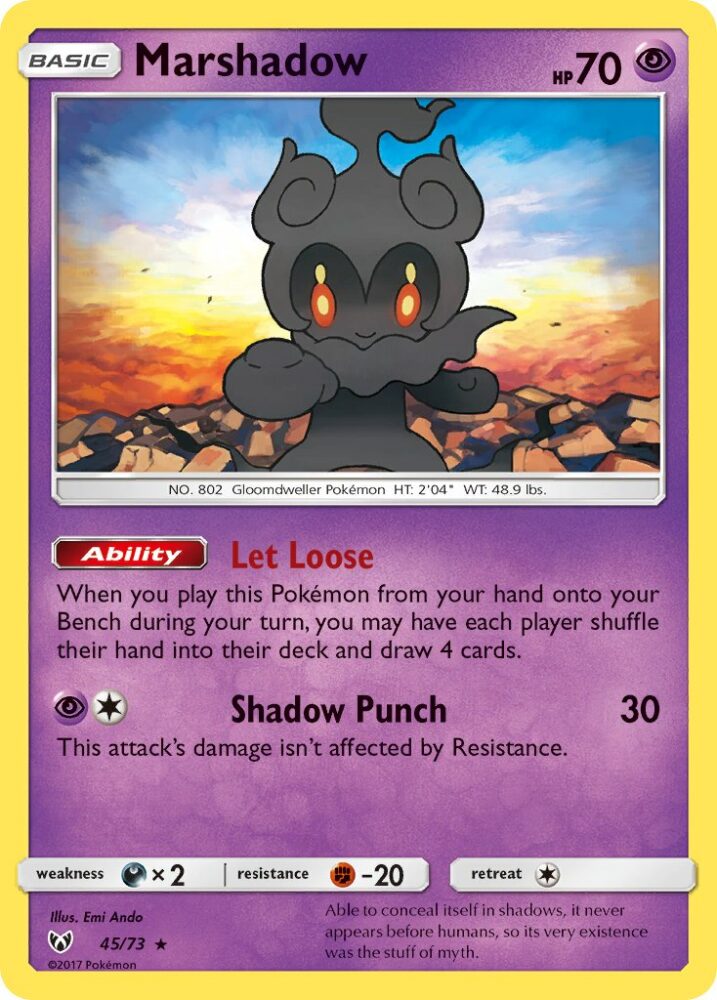
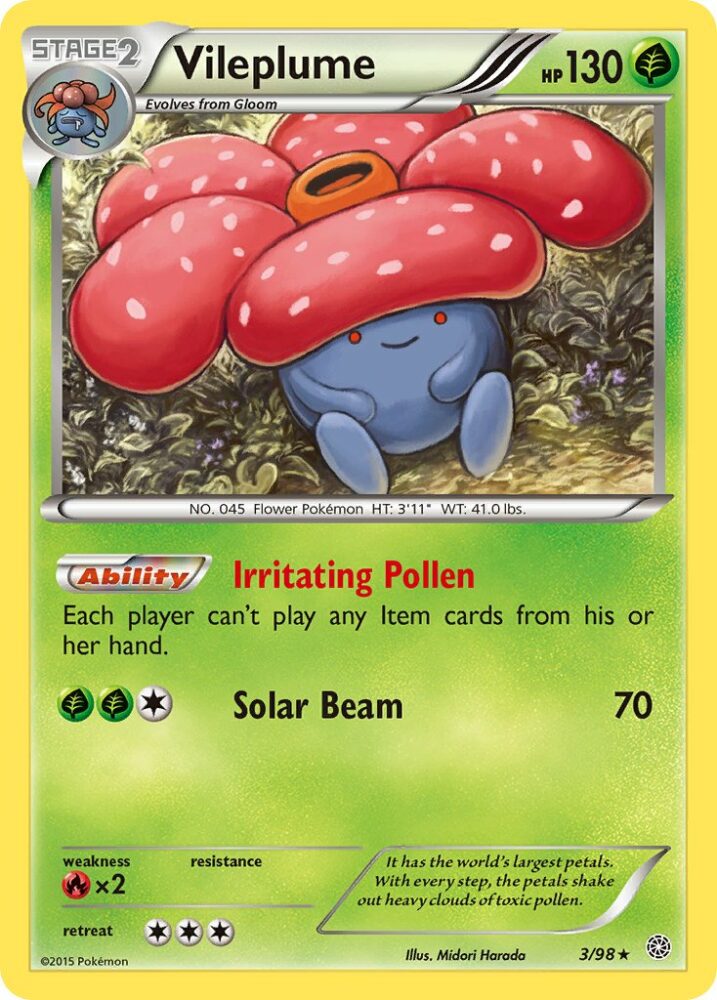
Expanded has a bad reputation (or at least it had one; I’m not sure whether it has any reputation right now). Since its card pool is so much larger than Standard’s, you might be worried that the format is too fast, with the player attacking first winning every time, or the first player setting up a deadly lock. I can understand where that complain comes from: in the past, Expanded has had some degenerate combos, and it’s not fun to play when, on your first turn of the game, your opponent has already set up a Vileplume (Ancient Origins) preventing you from playing Item cards, or used some combination of cards to make you discard all your hand. Thankfully, Expanded isn’t like this anymore, and hasn’t been for a while; many of the format’s most abusable cards, like Forest of Giant Plants and Marshadow (Shining Legends), have been banned.
To preempt a possible answer, yes, there are decks that can draw a billion cards by turn two and take six Prizes (for example, using Electrode-GX to attach a bunch of Reversal Energy and Counter Energy to Alolan Raichu [Unified Minds] and discarding all these Energy to KO multiple Pokémon). However, these decks aren’t, you know, actually good. The look devastating when they work, and I’m sure they make for great reels on Tiktok, but they have many, many weaknesses. They’re the kind of deck you bring when you want to annihilate your eight-year old cousin’s theme deck, not when you actually want to win against other Expanded players.
Instead, what I saw when I played Expanded was a format with many different strategies. Basic and Evolution decks, single-Prize or multi-Prize, stall, various kinds of lock… there’s a lot of variety to this format that makes it very entertaining. For a deckbuilder, there’s an almost unlimited supply of cards to consider, and funnily enough, even some recent cards that aren’t played in Standard can find a home in Expanded. Did you know that Radiant Charjabug saw some play? It wasn’t the best card ever, but it was a playable tech in some decks a year ago. That’s more than you can say about its Standard use!
Even if you’re not into actually building obscure decks and finding rogue decks, the fact that decks are so filled with interesting effects means that games can be extremely complex. Some of the best games of Pokémon I’ve played (not just in Expanded, but in general) were Shadow Rider Calyrex VMAX vs Regidrago VSTAR in the Silver Tempest Expanded format. (Yes, these were two of the best decks, maybe the two best decks, in the format at the time. Expanded breathes new life into cards that are forgotten in Standard.) I’m talking about games where a player could make a comeback despite being four Prizes behind, thanks to planning ahead, careful resource management, and good timing on their Supporter cards; months before Reversal Energy was announced and made Standard players dream about such games, Expanded players could experience them.
What’s new?
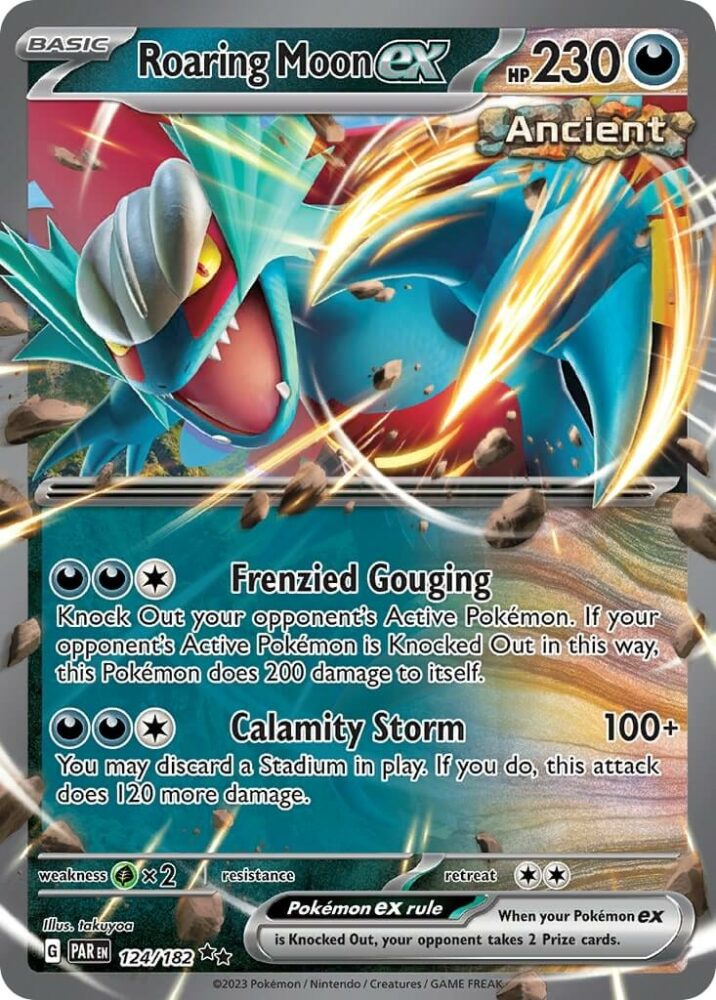

I’ve mentioned the Silver Tempest format twice already, and that’s because that’s the last time the format was playable online; when Scarlet & Violet released, Pokémon TCG Online shut down, and there was never an opportunity to play (Black & White-on) Expanded online since then. I suspect that many former Expanded players are in a similar situation. Before we start looking at decklists, let’s look at the best cards from the Scarlet & Violet era and discuss what they bring to the game. Obviously, I won’t mention cards that are reprints, like Super Rod or Counter Catcher, since they were already in the Expanded card pool.
- Miraidon ex, Electric Generator, Iron Hands ex: Lightning is one of the best types in Expanded. It gets powerful Energy acceleration in Tapu Koko Prism Star and Thunder Mountain Prism Star, good attackers like Tapu Koko GX and Vikavolt V, and the amazing Electropower. These cards make Electric decks very versatile: you can try to maintain Item lock for the whole game, win a Prize race, or even go for multiple KOs in one turn with Pikachu & Zekrom-GX. The new cards from the Scarlet & Violet era only make this archetype better: Miraidon ex, even as a 1-of, increases the deck’s consistency (get Vikavolt V and Tapu Koko Prism Star for the price of only one Quick Ball!), and it’s a solid attacker to hit other big Basic Pokémon on turn 1. Iron Hands ex provides the deck with one more advantage in Prize races against other attacking decks, and of course, Electric Generator, along with Max Elixir, adds more Energy acceleration to the deck. Strangely, these decks haven’t seen as much success as I’d expect, even in Japan where Miraidon ex saw success very early in Standard. However, some kind of Lightning-type deck seems to always be viable in Expanded, so I’m sure if the format gets more interest, players will explore this deck more.
- Roaring Moon ex: Similar to the Lightning type, Dark is also a type that has no shortage of strong cards: Weavile-GX, Greninja & Zoroark-GX, Darkrai-GX, Guzzlord [Cosmic Eclipse], Galarian Moltres V, etc., all held together by the power of Dark Patch. With a classic Item-based engine (Quick Ball, Battle Compressor, VS Seeker, Trainer’s Mail, etc., alongside Dedenne-GX and Crobat V), it’s possible to put a lot of Energy in play on turn 1. However, the deck always had the issue of not being able to deal that much damage on the first turn, except by using Hypnotoxic Laser and Darkrai-GX’s Dead End GX. Roaring Moon ex fixes that by being a powerful attacker that can oneshot any Pokémon on the first turn (even something like Arceus & Dialga & Palkia-GX). It also has an interesting synergy with an old Tool card, Protection Cube, though I’m not sure this inclusion is warranted. Whether it should be its own archetype, or just an addition to a Dark-type focused around other attackers, Roaring Moon ex is definitely a solid card for this format.
- Squawkabilly ex: Dedenne-GX and Crobat V are both staples in fast archetypes that want to achieve a powerful turn one, and Squawkabilly ex fills the same role – it’s actually better on the first turn, because it’s fine to start with it, but it becomes useless after that. Squawkabilly ex is a logical inclusion in fast decks, but it’s not that simple an inclusion: Bench space is definitely an issue. Nevertheless, decks that play Sky Field, like Turbo Dark sometimes do, can fit in one copy of each of Dedenne-GX, Crobat V, and Squawkabilly ex.
- Technical Machine Evolution: In the 200-player tournament I mentioned, the second place player ran a unique control deck, using the very interesting combination of Bunnelby and Technical Machine: Evolution. Since Bunnelby can attack twice in a turn, it can use Evolution twice, which means that it’s possible to evolve, say, an Oddish into a Vileplume [Ancient Origins], or Duskull into Dusknoir [Vivid Voltage], depending on which hurts the opponent more. Since Tools are not Items anymore, they can still be played under the effect of Vileplume’s Ability, so Evolution can still be used as a way to set up even under Item lock. Obviously, it’s not a card that any deck can run, but I think the way it can be used by specific control archetypes is very interesting. (It’s worth mentioning that Bunnelby is a card that Control decks tend to run anyway.)
- Toedscruel [Paradox Rift]: Probably my favorite part of looking at recent Expanded results was seeing how much play Toedscruel was seeing. This card, a fringe tech in Standard which no one runs because no one is afraid of Chien-Pao ex anymore, is very dangerous in Expanded because of how many cards it shuts down. Its most universal effect is shutting down VS Seeker, a staple of Expanded. But it also counters cards like Rescue Stretcher, Dowsing Machine, Exeggcute [Plasma Freeze], Lusamine, and even Regidrago VSTAR’s Legacy Star (again, Regidrago VSTAR is one of the top decks of the format).
Conversely, some of the best cards of the Scarlet & Violet era don’t deserve much of a mention here. Gardevoir ex has a powerful Ability, but Expanded has no shortage of Energy acceleration, and Psychic Embrace doesn’t seem to offer enough to warrant using a stage 2 as an Energy accelerator, when it can be shut down by so many cards (Garbodor [Breakpoint] comes to mind). Charizard ex might fare a bit better, because it can function even if it doesn’t have an Ability most of the time, and a 330 HP attacker remains hard to deal with in Expanded, but stage 2 decks are still fairly slow. Iono is strong, but about as strong as N, which is usually a 1-of (thanks to VS Seeker), so it hasn’t taken the format by storm. Iron Valiant ex would be extremely strong with Scoop Up Net, but the latter was banned in Japan back in October. This ban hasn’t been implemented in the rest of the world, but if Expanded events start coming back, even if they’re just side events at Regionals, I assume (and hope) that will change, as the format doesn’t need a good donk deck.
What to play?
As mentioned, the Expanded format hasn’t been fully explored, so it’s unclear which decks are the best of the best. However, we can use the results we do have, scarce as they may be, from non-official or older Japanese tournaments, to get an idea of the metagame. In no particular order, here is what I would consider meta decks:
- Regidrago VSTAR Toolbox (usually with Garbodor)
- Lugia VSTAR / Archeops with Double Dragon Energy
- Palkia VSTAR
- Shadow Rider Calyrex VMAX
- Stall, usually focused on Wobbuffet [Phantom Forces] or Snorlax [Pokémon Go]
- Fusion Strike decks, either focused on Mew VMAX, or Turbo Meloetta (with Dimension Valley)
Of course, you then have other archetypes like Lighting stuff, Dark stuff, Arceus & Dialga & Palkia-GX / Dragonite V, Tsareena V, etc. These decks seem to be less defined or less common, so it’s unclear how strong they actually are.
Here are three decklists to give a more concrete view of the format.
A. Palkia VSTAR
| Pokemon | Trainers | Energy |
|---|---|---|
| 3 Origin Forme Palkia V ASR 39 | 2 Guzma BUS 115 | 7 Water Energy |
| 3 Origin Forme Palkia VSTAR ASR 40 | 2 Professor’s Research SVI 189 | |
| 2 Toedscool OBF 118 | 1 Pokémon Ranger STS 104 | |
| 2 Toedscruel PAR 17 | 1 Karen PR-XY 177 | |
| 2 Dedenne-GX UNB 57 | 1 Raihan CRZ 140 | |
| 2 Tapu Lele-GX GRI 60 | 1 Iono PAL 185 | |
| 1 Girafarig LOT 94 | 1 Melony CRE 146 | |
| 1 Crobat V SHF 44 | 1 Arven OBF 186 | |
| 1 Starmie V ASR 30 | 4 Ultra Ball SVI 196 | |
| 1 Cryogonal UNM 46 | 4 Quick Ball FST 237 | |
| 1 Tapu Fini-GX BUS 39 | 3 VS Seeker PHF 109 | |
| 1 Radiant Greninja ASR 46 | 2 Pokémon Communication TEU 152 | |
| 1 Ordinary Rod SSH 171 | ||
| 1 Field Blower GRI 125 | ||
| 1 Battle Compressor PHF 92 | ||
| 1 Computer Search BCR 137 | ||
| 2 Float Stone BKT 137 | ||
| 1 Muscle Band XY 121 | ||
| 3 Sky Field ROS 89 |

This is the deck that won, undefeated (12-0-1, the tie being an ID), the 200-player tournament held in December. What strikes me about it is how fair the deck is. In a format that has seen turn 2 wins, resilient locks, and ultra-powerful attacks, this is what the best decks tend to look like: a bunch of solid cards together, with some disruption to slow down the opponent, even if it doesn’t prevent them from playing. The main attacker in this deck is Palkia VSTAR, which has a higher damage ceiling than usual thanks to Sky Field, although it can also use secondary attackers like Radiant Greninja and Starmie V. There’s a little bit of Item lock with Cryogonal, but it’s used mostly to slow down the opponent on turn 1, not to lock them out of the game. (In Expanded, due to the wide card pool, cards tend not to dominate because they have counters. Cryogonal’s Item lock is countered by Pokémon Ranger, a staple in Item-heavy decks.) Toedscruel prevents fast decks from discarding their hand too agressively, since they won’t be able to use their Supporters with VS Seeker, and it prevents slow decks from getting infinite value from a Lusamine loop. Girafarig is a tech against, mostly, Regidrago VSTAR: you can Lost Zone key attackers in your opponent’s discard, like Giratina VSTAR, to make them unable to OHKO you.
Palkia’s success is nothing new, but it’s always a bit surprising to me. It’s also one of the reasons why I think that some kind of Lightning archetype has huge potential: I think that hitting Palkia VSTAR for Weakness with the Item-locking Vikavolt V or Iron Hands ex’s Amp You Very Much could be a way to beat this powerful archetype.
B. Lugia VSTAR / Archeops
| Pokemon | Trainers | Energy |
|---|---|---|
| 3 Lugia V SIT 138 | 2 Wally GEN RC27 | 4 Double Dragon Energy ROS 97 |
| 3 Lugia VSTAR SIT 139 | 1 Guzma BUS 115 | 3 Powerful Energy DAA 176 |
| 3 Archeops SIT 147 | 1 N FCO 105 | 2 Double Colorless Energy SLG 69 |
| 1 Tapu Lele-GX GRI 60 | 1 Marnie SSH 169 | 1 V Guard Energy SIT 169 |
| 1 Dedenne-GX UNB 57 | 1 Professor’s Research SVI 189 | |
| 1 Garchomp V ASR 117 | 1 Cassius XY 115 | |
| 1 Garchomp & Giratina-GX UNM 146 | 4 Battle Compressor PHF 92 | |
| 1 Naganadel & Guzzlord-GX CEC 158 | 4 Quick Ball FST 237 | |
| 1 Squawkabilly ex PAL 169 | 4 Ultra Ball SVI 196 | |
| 4 VS Seeker PHF 109 | ||
| 3 Special Charge STS 105 | ||
| 3 Trainers’ Mail ROS 92 | ||
| 2 Field Blower GRI 125 | ||
| 1 Rescue Stretcher GRI 130 | ||
| 1 Computer Search BCR 137 | ||
| 2 Silent Lab PRC 140 |
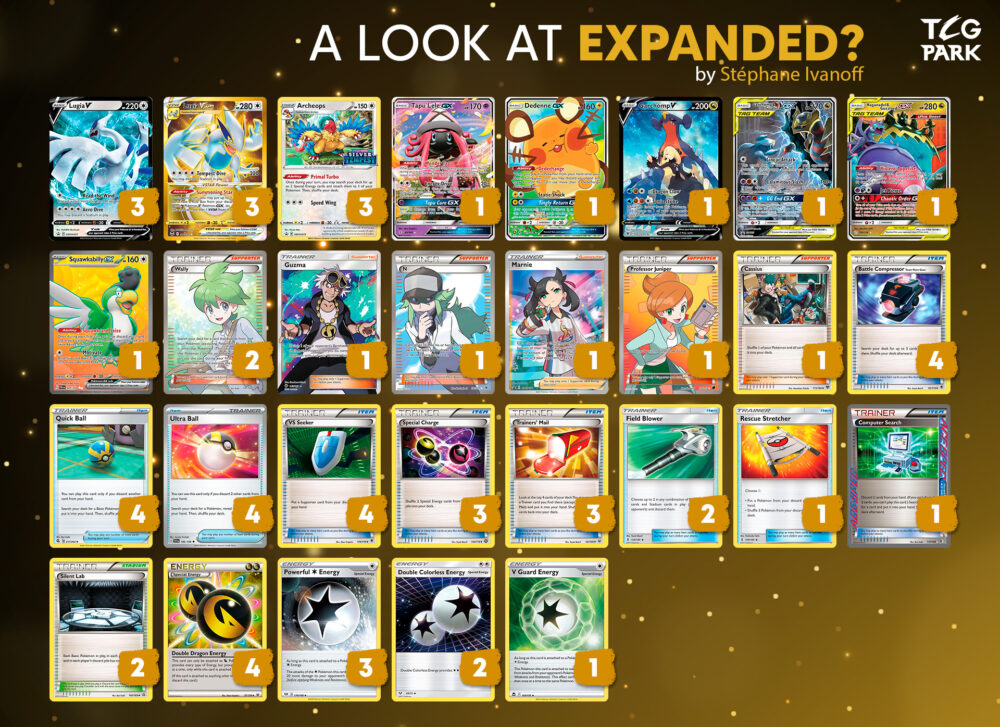
This is the archetype that won the latest Expanded Champions League in Japan, in March. While the format has changed since then, the deck itself remains very similar. Compared to its various Standard incarnations, this version of Lugia is much stronger. It has Battle Compressor to discard Archeops, and Wally to evolve Lugia V into its VSTAR, so it’s actually reasonable to use Summoning Star on the first turn going second. It can then use the most powerful Energy in the game, Double Dragon Energy, to power up attackers like Garchomp V and Garchomp & Giratina-GX for some powerful attacks. Of course, with Powerful Energy, Lugia VSTAR itself can also deal massive damage. Silent Lab provides counterplay against dangerous cards like Wobbuffet [Phantom Forces], and Special Charge recovers discarded Energy to make sure you never run out. Many Japanese lists also include Cassius, which acts as a way to remove a Bench sitter from the game, to heal a damaged Pokémon, and to switch a Pokémon trapped Active, all in one! Thanks to the way Archeops works, Cassius is better than, say, Professor Turo’s Scenario in this deck; it’s better to have Energy in the deck than in hand.
Lugia VSTAR is a versatile deck; the Double Dragon Energy variant seems to be the best one, but by running Aurora Energy and/or Prism Energy, you can use many other attackers as well, for example Iron Hands ex!
C. Miraidon ex
| Pokemon | Trainers | Energy |
|---|---|---|
| 2 Miraidon ex SVI 81 | 2 Guzma BUS 115 | 13 Lightning Energy |
| 2 Vikavolt V DAA 60 | 1 N FCO 105 | |
| 1 Iron Hands ex PAR 70 | 1 Marnie SSH 169 | |
| 1 Tapu Koko Prism Star TEU 51 | 1 Professor Juniper PLB 84 | |
| 1 Dedenne-GX UNB 57 | 1 Pokémon Ranger STS 104 | |
| 1 Squawkabilly ex PAL 169 | 1 Arven OBF 186 | |
| 1 Crobat V SHF 44 | 4 Electric Generator SVI 170 | |
| 1 Lumineon V BRS 40 | 4 Electropower LOT 172 | |
| 1 Girafarig LOT 94 | 3 Max Elixir BKP 102 | |
| 2 Ultra Ball SVI 196 | ||
| 4 Quick Ball FST 237 | ||
| 2 VS Seeker PHF 109 | ||
| 1 Super Rod PAL 188 | ||
| 1 Field Blower GRI 125 | ||
| 1 Escape Rope BST 125 | ||
| 1 Computer Search BCR 137 | ||
| 2 Float Stone BKT 137 | ||
| 1 Muscle Band XY 121 | ||
| 1 Forest Seal Stone SIT 156 | ||
| 1 Thunder Mountain Prism Star LOT 191 | ||
| 1 Stormy Mountains EVS 161 |
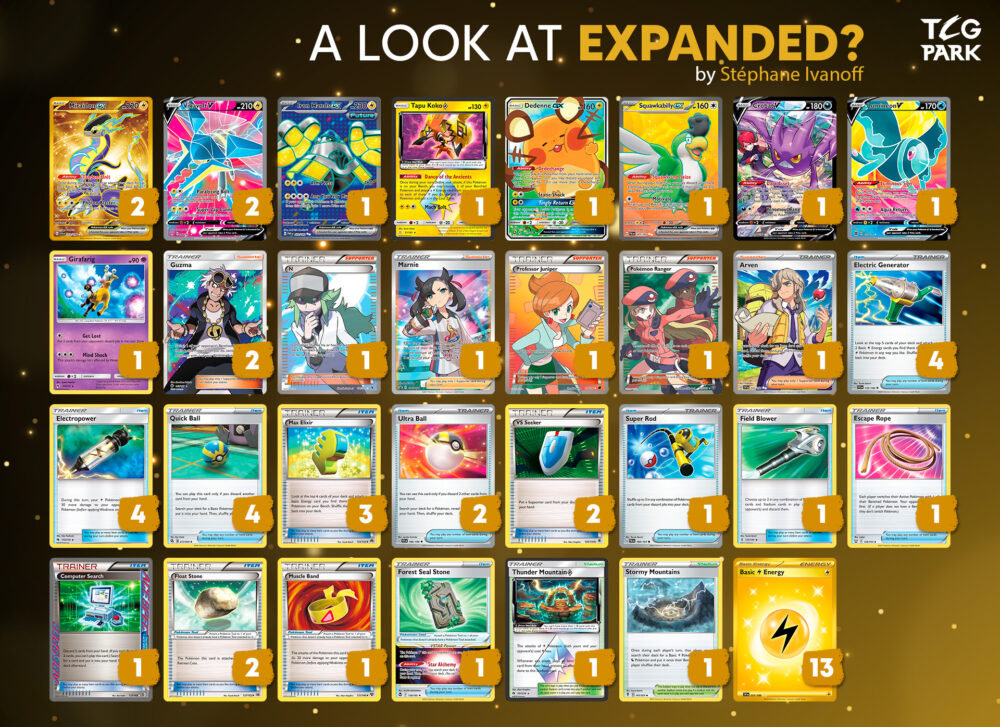
This is my attempt at a Miraidon ex, or Lightning Box, type of deck. I think the key to the deck’s success in Expanded is Vikavolt V; it can stifle the opponent’s set up, to get to the point where you have a lead. Then, you can switch to a simple Prize race. Iron Hands ex helps achieve that purpose: with Electric Generator and Max Elixir in the deck, it’s easily set up, and with Electropower, it can take KOs on unexpected targets. One Electropower is enough to OHKO Lugia VSTAR and Palkia VSTAR with Amp You Very much; with two, you can oneshot many support Pokémon like Dedenne-GX and Crobat V. I included two Guzma and an Escape Rope to target Benched Pokémon more easily; I think this deck can often win by focusing on easy targets after a certain point (which is good because it struggles to OHKO things with high HP, such as Tag Team and VMAX Pokémon).
Conclusion
If you made it until here, thank you! Obviously, I have no idea how relevant Expanded will be to the game in the future. While I hope for a return of the format to the competitive scene, some way or another, it’s also possible that it will remained confined to small side events at rare Regionals, and maybe even only in Portland. Even if that’s the case, though, I think it’s useful to keep some record of what the format looks like; people play all sorts of non-competitive formats, and I’m sure at some point, Expanded will get some attention from the same kind of players that enjoy GLC or retro formats as a change from Standard.
I also want to advocate for Expanded because, once again, I feel that it is often attacked unfairly by people based on hearsay or vague recollections of its past state, accusing it to be full of degenerate decks. I feel like the best rebuttal of this idea is the fact that Toedscruel, a simple disruptive stage 1 tech, is a playable card in Expanded. The format isn’t dominated by unstoppable combos or unbreakable locks, and hasn’t been for a long time; the best decks usually combine agression with disruption (to various degrees), and their various matchups allow for fun, interactive, thoughtful games. Let’s hope more players get to find that out in 2024!
Stéphane